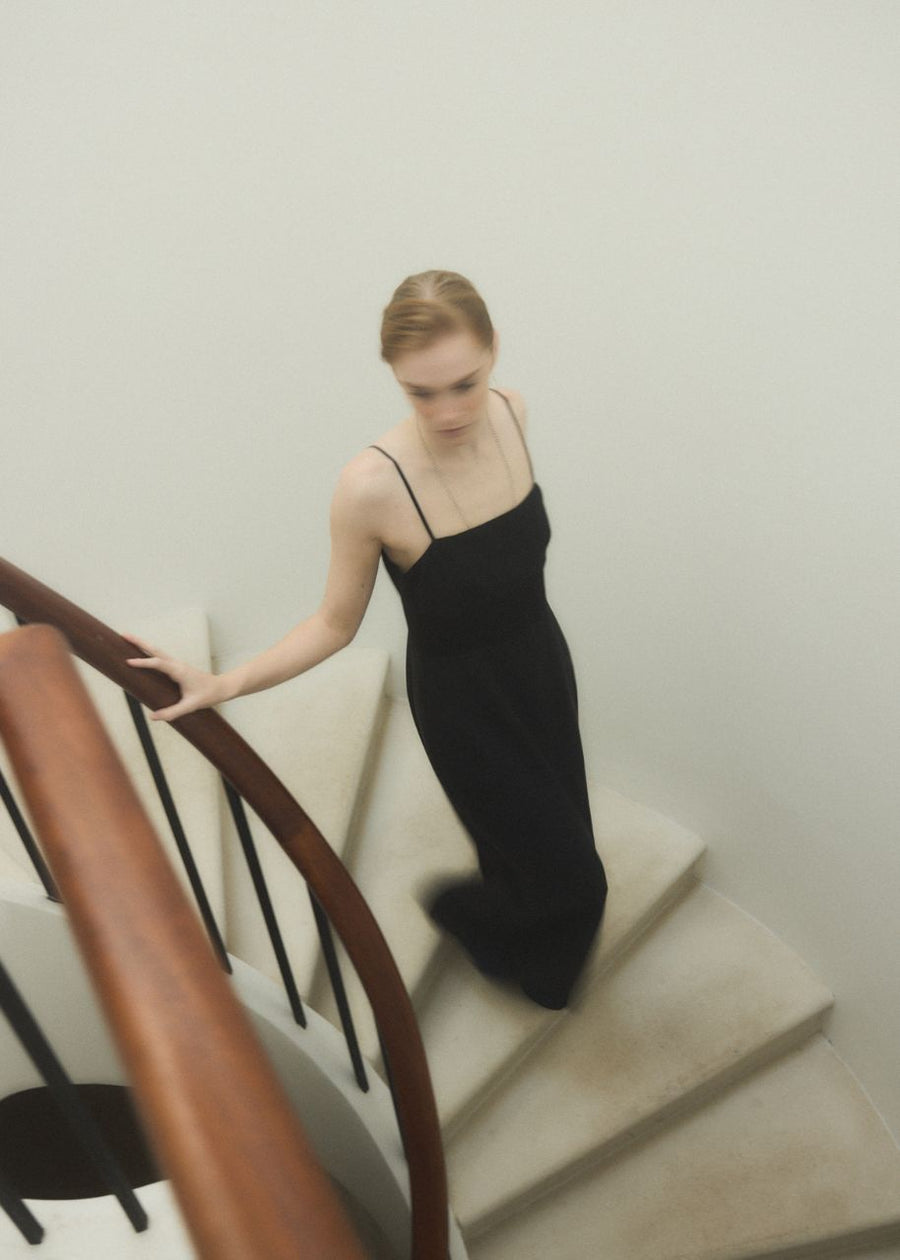Nestled in New York’s Hudson Valley, the Storm King Art Center is a testament to the seamless blend of art and nature. Spanning over 500 acres, this landscape, home to over 100 meticulously curated sculptures, complemented the sculptural elements and angular lines of Collection 02, providing a harmonious backdrop for our recent campaign shoot.

Kenneth Snelson, Free Ride Home, 1974, aluminium and stainless steel.
THE HISTORY
Established by Ralph E. Ogden and H. Peter Stern in 1960, Storm King Art Center was initially conceived as a museum for Hudson River School paintings. However, the focus soon shifted to sculpture, inspired by the acquisition of works by artist David Smith. Today, Storm King houses an extensive collection of sculptures by prominent artists such as Alexander Calder, Mark di Suvero, Richard Serra, and Maya Lin, among others.
What sets Storm King apart is its use of the landscape as a canvas. Rolling meadows and expansive fields offer a dynamic and ever-changing backdrop, transforming with the seasons and the time of day. Visitors can explore the artworks from various vantage points, discovering new perspectives with each visit.
In addition to its artistic mission, Storm King is dedicated to preserving the natural environment. The centre practices sustainable land management, preserving the site's ecological integrity and protecting native species. This commitment ensures that Storm King remains a pristine and inspiring place for future generations.
Visitors to Storm King Art Center can immerse themselves in both the art and the tranquil beauty of the landscape. It offers a peaceful escape from the clamour of everyday life, encouraging us to slow down and truly appreciate the profound beauty of the world around us.
 Alexander Calder, Jerusalem Stabile II, sheet metal, bolts and paint.
Alexander Calder, Jerusalem Stabile II, sheet metal, bolts and paint.
American, 1898–1976
Conceived during his visit to Jerusalem in 1975, Calder returned to his studio in Saché, France, where he meticulously selected the exact location and orientation for the sculpture. Reflecting the region's cultural and historical significance, the piece features a light, open side with high arches that frame the panoramic view, contrasted by a solid, heavy side reminiscent of an animal’s tail.
 Ursula von Rydingsvard, For Paul, 1990–92, cedar and graphite.
Ursula von Rydingsvard, For Paul, 1990–92, cedar and graphite.
American, born Germany, b. 1942
"For Paul" is crafted from four-by-four cedar beams, stacked, glued, and cut freehand with a circular saw—an intuitive process von Rydingsvard likens to the freedom and creativity of drawing. The sculpture is dedicated to the artist’s husband.
 Alexander Liberman, Adonai, 1970, steel.
Alexander Liberman, Adonai, 1970, steel.
American, born Russia, 1912–1999
Liberman gave this cathedral-inspired work the unexpected title "Adonai," the Hebrew word for God. Crafted from six-foot-long gas storage tanks, Adonai was one of the last major sculptures acquired by Ralph E. Ogden, Storm King’s co-founder, who enjoyed solving the installation challenges it presented.
“I use cheap materials for economic reasons, but also, there’s an odd, maybe a romantic longing to contact the earth. I like rust. I like Earth. I like rocks. The quality of a primitive forge anchors a modern mind to the earth.” - Alexander Liberman

 Kenneth Snelson, Free Ride Home, 1974, aluminium and stainless steel.
Kenneth Snelson, Free Ride Home, 1974, aluminium and stainless steel.
American, 1927–2016
Touching the ground at three points, this sculpture is made from a network of stainless steel cables knotted to aluminium tubes. Inspired by anatomy, the cables function like muscles and the aluminium tubes like bones. When installed in the spring of 1975, a crew of just four raised the entire structure in under an hour.
“I began by thinking of a sculpture that would soar overhead. I started with a central core and then developed it in three directions with three arches. One of the arches began to take on a descending fast plunge. It reminded me of the shape of a bucking horse. So, Free Ride Home, the name of a racehorse, became the name of the sculpture.” - Kenneth Snelson
 Alexander Calder, The Arch, 1975, painted steel.
Alexander Calder, The Arch, 1975, painted steel.
American, 1898–1976
Created in 1975 from a twelve-foot-high black-painted steel maquette, "The Arch" is one of the last works Alexander Calder created before his death in 1976. The sculpture is composed of three elements: a bent “boomerang” on one side, joined by a central arch to a tall, concave fan shape, with an elongated upper portion capped by a small triangular “tail.” Walking through Calder’s arch not only highlights the sculpture but also enhances the appreciation of its surroundings.
 Mark di Suvero, Mon Père, Mon Père, 1973–75, steel.
Mark di Suvero, Mon Père, Mon Père, 1973–75, steel.
American, born China, b. 1933
When Mark di Suvero's father died in 1973, di Suvero was living on a boat in France, voluntarily exiled in protest of the Vietnam War. Unable to return to the U.S., he created the sculpture "Mon Père, Mon Père" ("My Father, My Father") in the shipyard as a lament for his father. When strong winds blow, the unpainted steel sculpture seems to bow its head slowly.

Collection 02 Campaign
Photographer: James Lowe
Stylist: Briar Turner
Location: Storm King Art Centre








